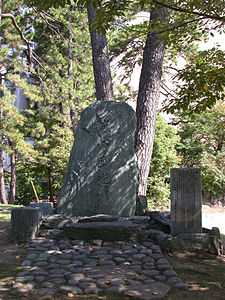Kokura





Kokura (小倉) is an ancient castle town and the center of Kitakyushu, Japan, guarding, via its suburb Moji, the Straits of Shimonoseki between Honshu and Kyushu. Kokura is also the name of the penultimate station on the southbound Sanyo Shinkansen line, which is owned by JR West. Ferries connect Kokura with Matsuyama on Shikoku, and Busan in Korea.
History
Kokura obtained municipality status in 1900. When the city of Kitakyushu was created in 1963, it was divided into Kokura Kita ward in the north, and Kokura Minami ward in the south. The Ogasawara and Hosokawa clans were Daimyos at Kokura castle.
17th century
Miyamoto Musashi, samurai swordman, author of The Book of Five Rings and founder of the Hyoho Niten Ichi-ryū, famous for its use of two swords, lived in the Kokura castle under the patronage of the Ogasawara and Hosokawa clans briefly during 1634.
Second World War
Kokura was the backup target for the "Little Boy" bomb on August 6, 1945, so if Hiroshima had been clouded over, the first atomic bomb would have been dropped on Kokura. Kokura was the primary target for the "Fat Man" bomb on August 9, 1945, but on the morning of the raid, the city was obscured by clouds and smoke from an earlier firebombing of the neighboring city of Yahata. Since the mission commander Major Charles Sweeney had orders to drop the bomb visually and not by radar, he diverted to the secondary target, Nagasaki.[1]
Notable residents
- Matsumoto Seicho - writer
- Miyamoto Musashi - swordsman and rōnin
- Mori Ōgai - physician, translator, novelist and poet
- Tetsuya Theodore Fujita - Meteorologist
Notable figures born in Kokura
Festivals
The Gion Festival of Kokura is called the “Gion of Drums” and celebrates the life of local folk-hero Muhomatsu.
Notable facts
The city is the site of the main dojo (hombu) of Miyamoto Musashi's sword school, Hyoho Niten Ichi-ryū.[2]
See also
- Kokura Kita-ku
- Kokura Minami-ku
- Kokura prefecture
- Atomic bombings of Hiroshima and Nagasaki
References
Coordinates: 33°53′N 130°53′E / 33.883°N 130.883°E